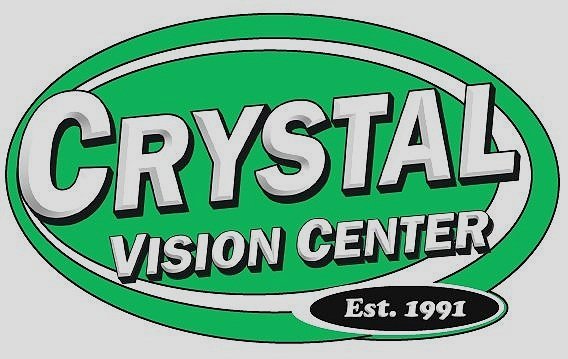Crystal Vision Center provides several options to filter (slow the transmission of) “blue light”.
Visit our Opticians and Optometrists to discuss the option that is right for you!
What is High-Energy Visible Light (HEV Light) “Blue Light”?
High-energy visible light (HEV light) is high-frequency, high-energy light in the violet/blue band from 400 to 450 nm in the visible spectrum, which has a number of biological effects, including those on the eye.
Despite a lack of any concurring scientific evidence, HEV light has sometimes been claimed to be a cause of age-related macular degeneration.
Currently, a 2019 report by France's Agency for Food, Environmental and Occupational Health & Safety (ANSES) supports the 2010 result on the adverse effect of blue LED light (400-50 nm spike) on the eye, which can lead to impaired vision. It highlights short-term effects on the retina linked to intense exposure to blue LED light, and long-term effects linked to the onset of age-related macular degeneration.
Harvard Health Publishing additionally asserts that exposure to blue light (especially blue LED light, but also broad-spectrum blue light) at night has a stronger negative effect on sleep. A June 14, 2016 press release by the American Medical Association concludes that there are negative health impacts from the unrestrained use of LED street lighting in general.
Blue light is a range of the visible light spectrum, defined as having a wavelength between 400 and 525 nm. This includes wavelengths between violet and cyan in the spectrum. Narrow-spectrum blue light (also called blue LED light or short-wavelength LED light) is a type of high-energy visible light, defined as having a wavelength between 400 and 450 nm. This light is common in LEDs (even when used in illumination products) as a carry-over from computer-screen technology.
Blue light is an essential component of white light. White can be made from either narrow-spectrum or broad-spectrum blue. For example, LED technology tends to combine narrow-spectrum blue and yellow, while other technologies include more cyan and red. Fluorescent coatings generate violet and cyan spikes, in addition to having a smaller narrow-spectrum blue component. Natural light has a much more even distribution of blue wavelengths than most artificial light.
Blue LED light sources are becoming increasingly common in today's environment. Exposure to blue light comes from a variety of technologies including computers, televisions, and lights. Much of the harmful exposure arises from light emitting diodes (LEDs). Today, many white LEDs are produced by pairing a blue LED with a lower-energy phosphor, thereby creating solid-state light (SSL). This is often considered “the next generation of illumination” as SSL technology dramatically reduces energy resource requirements.
Increasingly, people are exposed to blue LED light via everyday technology. The 2015 Pew Research Center study found that 68% of U.S. adults own a smartphone and 45% own a tablet. The study also found that levels of technology ownership vary by age; 86% of Americans 18-29 and 83% of those 30-49 own smartphones. Younger Americans also use high rates of blue light technologies. The survey of Common Sense Media in 2013 also demonstrated that 72% of children age 0–8 years old used mobile devices for watching videos and playing games. Moreover, 93% of teens owned a computer or had access to one at home. In contrast, computer ownership rates are lower for older Americans.
Crystal Vision Center provides several options to filter (slow the transmission of) “blue light”. Visit our Opticians and Optometrists to discuss the option that is right for you!

